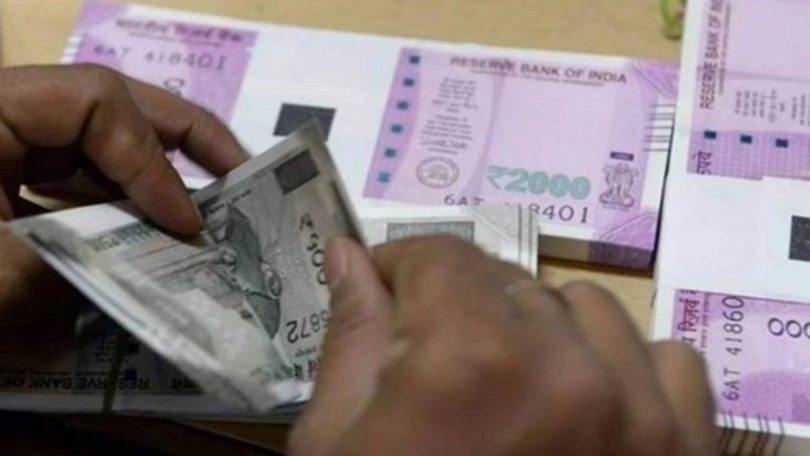[ad_1]
Boosted by the overall optimism in the country’s economic stature and favourable policies, the capex plans of India Inc are back on track, with corporate spending expected to continue undeterred for the rest of the financial year. A majority of the companies had opted for a ‘wait and watch’ approach during the first half (H1) of this fiscal on low capacity-utilisation and largely uncertain business environment.
The average capacity utilisation in manufacturing is over 70% and reflects a sustained economic activity in the sector, while the growth momentum is likely to sustain for another 6-9 months, according to a Ficci report. According to RBI data, the bank loans to the industry rose 12.6% of September end, a 1.7% rise compared to the same month of last year.
“India growth story on the back of higher income, favourable demographics, tech innovation, buoyant demand, Production Linked Incentive (PLI) scheme, tax rationalisation, conducive government policies and competitive service offerings. This magnified optimism has built up a strong confidence index with a compounded growth outlook despite the geo-political humdrum,” Niranjan Hiranandani, managing director at Hiranandani Group said.
“The renewed economic interest has nudged industry players to augment capex plans for diversification, expansion, enhanced capacity utilisation and better customer experience,” he added.
Larsen & Toubro’s (L&T) about Rs 4,000-crore operational capex plans of is on track, even as the capital goods and engineering company continues to closely watch the “momentum build up” in private capex in the coming quarters.
“Private capex is seeing signs of revival,” P Ramakrishnan, vice-president of L&T, had told analysts.
Also Read: Bank loan growth posts slight decline in Nov 4 fortnight
JSW Energy had earmarked a capex of about Rs 8,000-10,000 crore per year for the next 10 years. Out of the total capex spend of Rs 15,000-crore earmarked for the current fiscal, JSW Steel has already spent Rs 6,800 crore in H1 and the remaining will be utilised in H2. At the start of this fiscal, JSW Steel had a capital outlay of `20,000 crore for the year, an increase from Rs 15,000 crore spent in FY22. This, however, was cut to Rs 15,000 crore on back of lower cash generation in June quarter.
“There will be no further slash of capex this year,” JSW Steel joint managing director and group CFO Seshagiri Rao MVS said.
Grasim Industries’ actual budget spends till the first half of FY23 was at Rs 1,524 crore, against the total capex plan of Rs 6,720 crore for FY23. The Aditya Birla Group’s flagship company also got board approval for an additional capex of Rs 565 crore for existing businesses, out of which Rs 382 crore is expected to be spent in FY23.
Asian Paints’ capex for the next three years would be about Rs 6,750 crore, including Rs 3,400 crore earmarked for capacity addition, Rs 2,550 crore for backward integration and an expected outflow of Rs 800 crore for acquisitions, its MD and CEO Amit Syngle said in an investor call last month. Tata Steel had earmarked a total capex spend of Rs 12,000 crore of capex for FY23, of which it has spent less than half.
Piramal Pharma, which got listed last month, earmarked a capex of about Rs 1,200 crore over the next 24 months, while that of auto parts manufacturer MM Forgings is `550 crore for the same period. Further a cut in corporate tax rates, deleveraging carried out by corporates over the past three fiscals, leading to strengthening balance sheets, shift to sustainable and green investments across sectors and rising capacity utlisations are among other reasons.
An expected healthy domestic growth seen in India as incomes rise and the country emerges as a fast-growing economy would also help, Hetal Gandhi, director–research at Crisil Market Intelligence and Analytics said.
“To be sure, headwinds such as tightening monetary policies and weak global sentiments do exist but the number of tailwinds outweigh the short-term headwinds. Capacity utilisation across sectors is inching towards pre-Covid levels, aided by healthy offtake. In fact, among core economy sectors, in cement and steel while aggregate capacity utilisation is at historical levels (80-81% for steel-higher than decadal average and 66-67% for cement), large companies are at above these levels and hence investing,” Gandhi added.
In the last fiscal, the capex spends of top 100 companies (excluding banks and financials) in Nifty200 index, rose to Rs 4.65 trillion, the highest in the past decade, on the back of favourable policies and market conditions. This was also 14% higher from Rs 4.08 trillion in FY21, after two years of successive decline.
“The corporates earlier were borrowing from the international market. Today the international market rates plus the hedging cost are actually an expensive proposition. This is also another factor which has led to a scenario where corporates have started looking at the Indian banking system for borrowing,” SBI chairman Dinesh Khara said.
The growth in corporate loans (banks lending to industry) so far has been used largely for working capital and immediate needs, but large corporates also earmark a sizeable portion for long-term investments, bankers said.
Looking ahead, analysts expect the corporate expenditure cycle to begin from 2023-24, and this will lead bolster the growth in corporate loans.
[ad_2]
Source link








